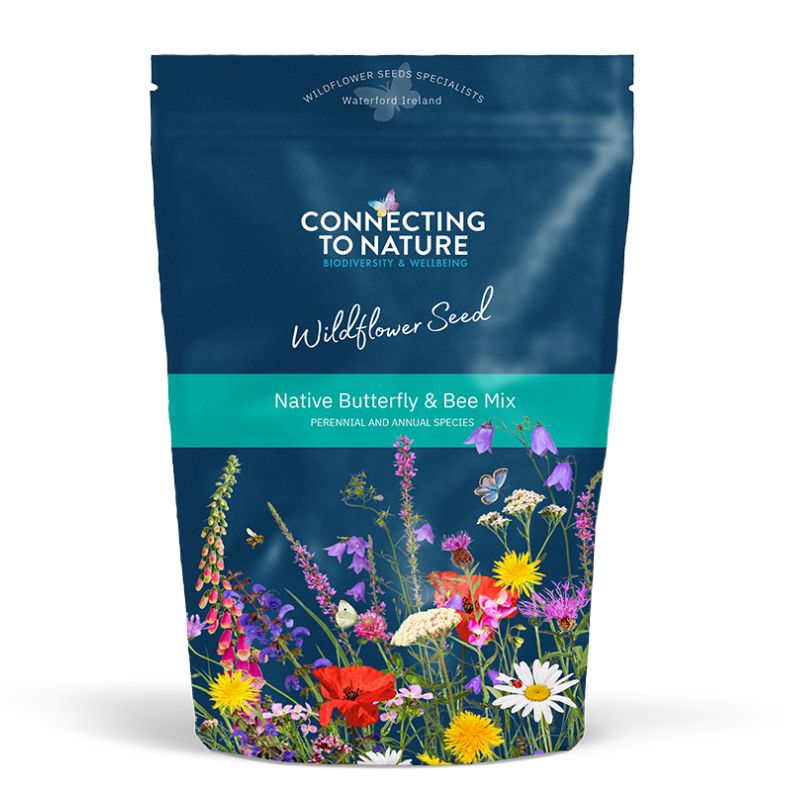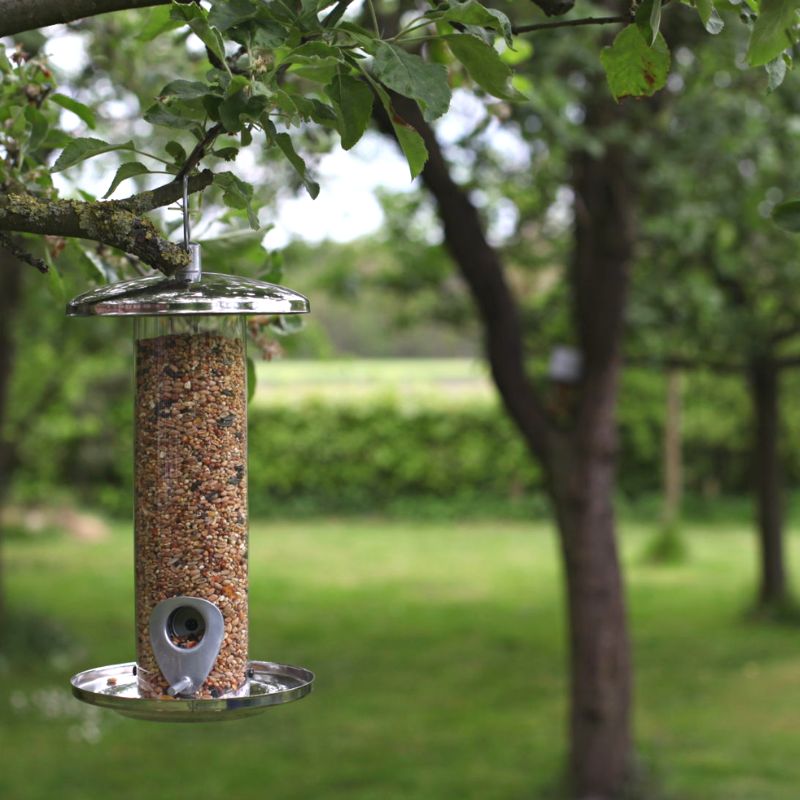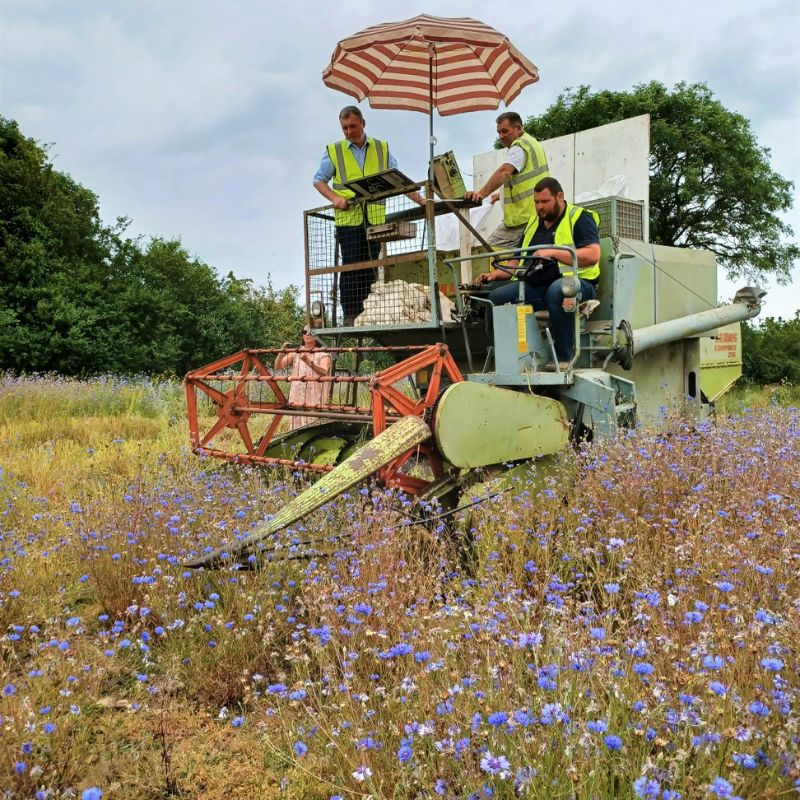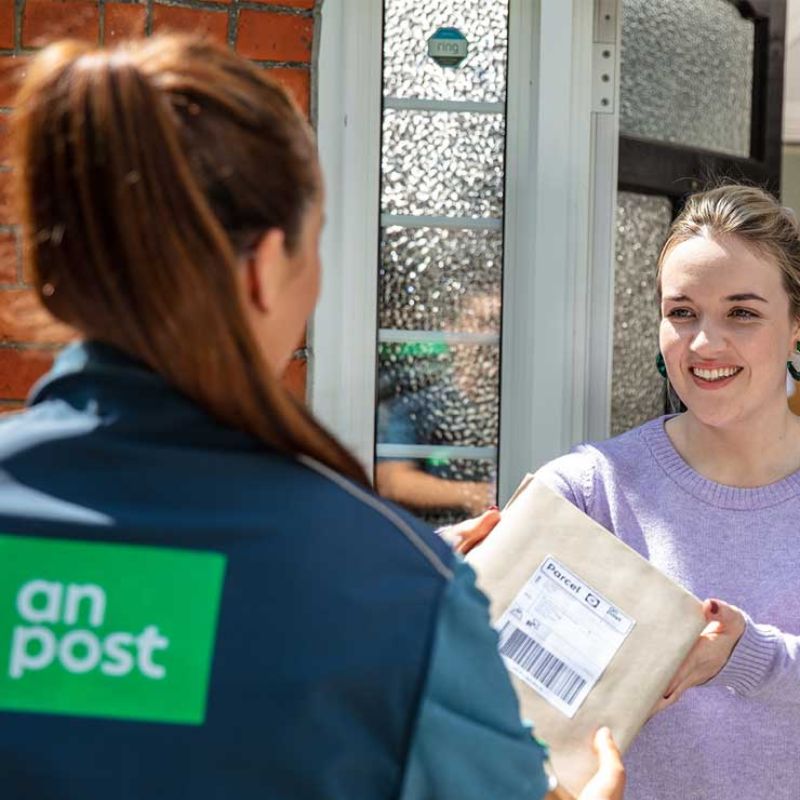An Autumn Guide to Creating a Biodiverse Garden
Did you know Autumn is the best time of year to plan and plant your summer garden?
Click this book to open the guide ⬇️
Autumn Guide - creating a biodiverse garden
Did you know Autumn is the best time of year to plan and plant your summer garden?
Many plants such as Irish native tress and hedging, and spring flowering bulbs are dormant from Autumn, making it the only suitable time to plant. As for wildflowers, there are several reasons to sow in Autumn. The weather is favourable with moisture and warmth in the soil, the you plants are less prone to damage due to few slugs, snails and aphids in the garden, and many species need a spell of cold soil temperatures to break their dormancy.
But that’s not it, there’s a little maintenance to do too, and feathered friends to look after. I hope this guide gives you an insight on what you can do to improve and boost your outdoor space.
Contents
In this Autumn planting guide, we cover the following topics;
- Spring Flowering Bulbs
- Wildflowers
- Starting a wildflower garder
- Autumn maintenance
- Boosting the colour in your wildflower meadow
- Controling grass with Yellow Rattle
- Native Trees & Hedging
- Feeding Wild Birds
SPRING FLOWERING BULBS
Nothing brings the garden to life in the new year quite like Spring flowering bulbs! They're easy to grow, bloom yearly, and can be planted almost anywhere.
When to plant Spring flowering bulbs?
September - Novemeber
How to plant bulbs?
- Choose a site with well-drained soil, so the bulbs don't rot when they are dormant in summer.
- Remove stones and weeds that you can identify from the area before you get started, and if the soil is particularly poor, mixing in some compost will promote healthy growth.
- Bulbs should be planted to a depth of around three times the bulb's height. Use a plant dibber to measure the bulb and to create an appropriate-sized hole. Then place the bulbs into the holes and root end down. Bulbs can also be planted in pots.
- Cover the hole with soil or compost.
|
Top Tip: Plant larger bulbs in groups of 5-7 and smaller bulbs in groups of 20-25. For a natural effect simply toss a varied selection of bulbs in the air and dig holes to plant the bulbs in where they have landed. Plant some bulbs beneath your wildflower meadow, to bring an early display of colour before your wildflowers bloom. |
VIEW OUR RANGE OF BULBS - IRISH NATIVE BULBS, BULBS FOR BEES, IRISH PRODUCED BULBS >

WILDFLOWERS FOR AUTUMN SOWING
How to start a wildlfower garden
You've picked a good time to start as there are many benefits that come with sowing wildlfower seeds in Autumn. You can expect flowers up to four weeks earlier than those sown in Spring. The weather is favourable with moisture and warmth in the soil, the you plants are less prone to damage due to few slugs, snails and aphids in the garden, and many species need a spell of cold soil temperatures to break their dormancy.
When to sow wildflower seeds?
Septemeber - Late October
Preparing the ground for sowing wildflowers
Begin ground prep as far in advance of sowing as possible – we recommend starting about a month in advance. A well-prepared seed bed, free of weeds, grass and other plants can optimise germination, survival rate and will determine the success of your wildflowers.

How to sow wildflower seeds
- Rake the seed bed to create a fine, crumbly texture, like you would for sowing a lawn.
- Scatter the seed over the seedbed (see our top tip below).
- Create good seed to soil contact by pressing the seed into the soil by walking over the area or using a roller. Or lightly rake the soil, careful not to bury the seeds too deep, the seeds should be covered to a depth of no deeper than 1mm.
| Top tip: Divide the seed bed into several sections (e.g. 10 sections), Divide the seed into an equal number of containers (e.g. 10 cups). Then, mix a carrier such as Ready Break or very dry sand into the wildflower seed. Scatter each container of seed over each section. |
How to choose a suitable wildflower seed mixture?
Knowing what you want to achieve will help with choosing a mixture. We’ve developed a range of mixtures to suit different, sites, situations & expectations.
AESTHETICS Annual Seed Mixtures create the most vibrant display
REDUCED MAINTENANCE & BIODIVERSITY Where aesthetics are not as important, choose a mixture with perennial species.
POLLINATORS While most wildflowers are a good food source for pollinators, The Butterfly and Bee Mix gives that little bit more.
PLANT CONSERVATION The Traditional Irish Native Mix includes some of Ireland's oldest native plant species, a conservation-grade seed mix.
NO MOW MAY Little to no flowers in your lawn? Give it a boost with the Low Growing Mix.
SPECIFIC SITES AND SITUATIONS some sites may require a specialist seed mix, e such as the Acidic Soils Mix, Wetlands Mix, Shaded Areas Mix, Coastal Mix.
VIEW ALL WILDLFOWER SEED MIXTURES >

Autumn maintenance for a wildflower garden
It's time to cut your wildflowers back!
Wildflowers require very little maintenance, but this part is essential! Cut the flowers back to approximately 10 cm in height and remove those cuttings. You will know it's time to cut them back when the petals have lost their colour and the seed heads begin to dry out .
| Why is it essential to remove the cuttings? Removing the cuttings will ensure new and existing plants aren't smothered, and soil fertility is kept low (wildflowers prefer poor soil). |

What do I need to do once the wildflowers are cut back?
Depending on what you wish to achieve and the current state of your meadow. You may need to give it a colour boost with Annual species, sow Yellow Rattle to reduce grass growth, or just wait for the perennials to come through next year.
How to give your wildflower garden a colour boost
Annual Species, the most vibrant of all wildflowers, complete their life-cycle in one year, meaning the same plant wont grow back again. Ensure you have colour again next year by adding more annual seeds. *Note, if you have already sown perennials this is not necessary, but recommended.
HOW TO OVER SOW:
- Cut the meadow back to approx 4-10cm in Autumn.
- Using a rake or chain harrow, expose and loosen the soil on the seed bed.
- Scatter a small amount of seed (approx 1g per m²) over the seed bed
| Why does the soil need to be disturbed (loosened)? Disturbing the soil by raking or chain harrowing will aid germination of annuals. If the soil remains compacted, annual seeds will not germinate. |

YELLOW RATTLE
Over time, grass may germinate and start spreading amongst your wildflowers. If the grass isn't controlled, there's a risk that it will outcompete the wildflowers over time.
Let me introduce you to the magical Yellow Rattle, known as 'the Meadow Maker' or 'Nature's Lawnmower'. This species is your best friend for reducing grass growth amongst your wildflowers to ensure a species-rich meadow.
How to control grass with Yellow Rattle
Firstly, Yellow Rattle must be sown in autumn (between August and November) ONLY. It requires a natural process called vernalisation which is the exposure of the seed to a period of low ground temperatures to stimulate germination.
HOW TO PLANT YELLOW RATTLE SEEDS?
- Cut the wildflowers and grass back to approx. 3-10cm in height and remove those cuttings.
- Use a rake to expose bare earth, creating space for the yellow rattle to establish.
- Drop pinches of the seed onto the exposed earth throughout the meadow and press into the soil.
| How does Yellow Rattle work? Yellow Rattle is a ‘hemiparasite’; it's partially parasitic on grass. As it grows, Yellow Rattle attaches itself to the roots of grass, diverting water & nutrients from the host grass into the Yellow Rattle itself. This allows other wildflowers the chance to germinate & grow with less competition from grass species. |

NATIVE TREES & HEDGING - bare-root whips
Planting Irish native bare-root trees and hedging is one of the most effective ways to support biodiversity while bringing interest, colour, shelter and privacy to any garden space.
| Did you know? Planting a single Irish native bare-root tree in your garden could absorb more CO2 than would be produced by a car travelling to Beijing and back? |
When to plant bare-root trees and hedging?
Bare-root hedging and trees should be planted between Novemeber and April, when the trees are dormant.
How to plant bare-root trees and hedging?
- Create a slit in the ground with a spade by pressing it into the ground and pushing it forward.
- While the spade is still in the ground and the slit open, place your tree inside to the dept of the collar (where the trunk meets the roots) and carefully remove the spade.
- Push the soil back around the tree and firm down with your foot.
- Finally, water the plants generously.
What tree's and shrubs should I plant in my garden?
We've made this part easy for you by creating diverse mixtures of Irish native trees and shrubs for planting in your garden.
POLLINATOR & BIRD MIX This pack of trees and shrubs will create corridors, or 'highways' for wildlife to move from one habitat to another safely.
FORAGER'S MIX This mixture has been specially selected to bring an abundance of flowers, fruit and nuts to your garden for foraging.
TRADITIONAL IRISH NATIVE HEDGEROW MIX We selected the species for this mixture to support biodiversity in you garden, or on-farm.
SMALL GARDEN TREE PACK A mixture of 5-15 Irish Native bare-root trees for any size garden.
VIEW ALL NATIVE TREES AND HEDGING MIXTURES >
FEEDING IRISH WILD BIRDS IN AUTUMN
We have been asked by our Butterfly and Bee champions, "What about our feathered friends in the garden? "
We agree they are part of our biodiversity in Ireland and great contributors to our wellbeing. Who doesn't have a love hearing bird song in the open!
| We recommend that you feed wild birds all year round for the most benefit to bird health and wellbeing. |
If you are not feeding all year round, we recommend starting in September or October. Unpredictable weather in Autumn inhibits opportunities for wild birds to build up fat reserves before the winter, so we must give them a helping hand. Start early, so the birds know where to find a reliable food source and grow accustomed to the feed area before Winter sets in.
What to feed Irish wild birds in Autumn?
In the Autumn, the best foods for wild birds are high-energy feeds such as suet-coated oat flakes, peanuts, sunflower seeds and suet products such as fat balls helping to build up fat reserves.
Our High Energy No Mess Mix, Robin & Songbird Mix and the All-Seasons Garden Mix contain all of these essential ingredients.
Wild bird food for Autumn feeding
HIGH ENERGY, NO MESS MIX Our best shell-free food is exceptionally high quality and is pecked away completely by all common garden birds.
ROBIN AND SONGBIRD MIX Many songbirds are soft beak eaters for this reason, we have included ingredients, such as insects, fruits, and other de-hulled seeds, ensuring no mess in your garden.
ALL SEASONS MIX Rich and versatile - this mixture provides a lot of energy and valuable nutrients, suitable for year-round feeding.
FAT BALLS Our recipe is a particularly high quality suet-based food. These fat balls are pecked completely away even in cold temperatures.













